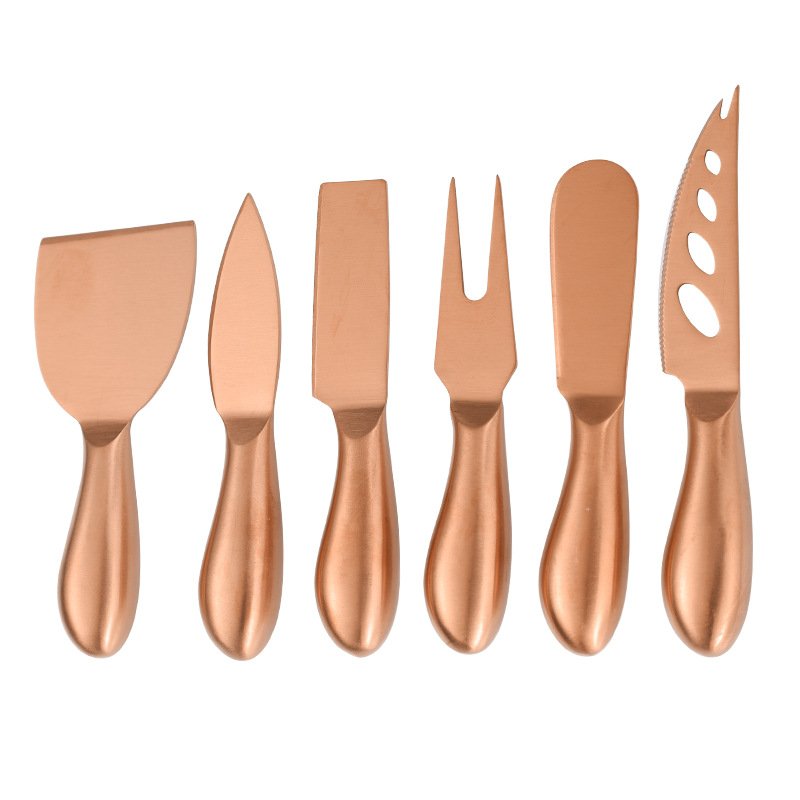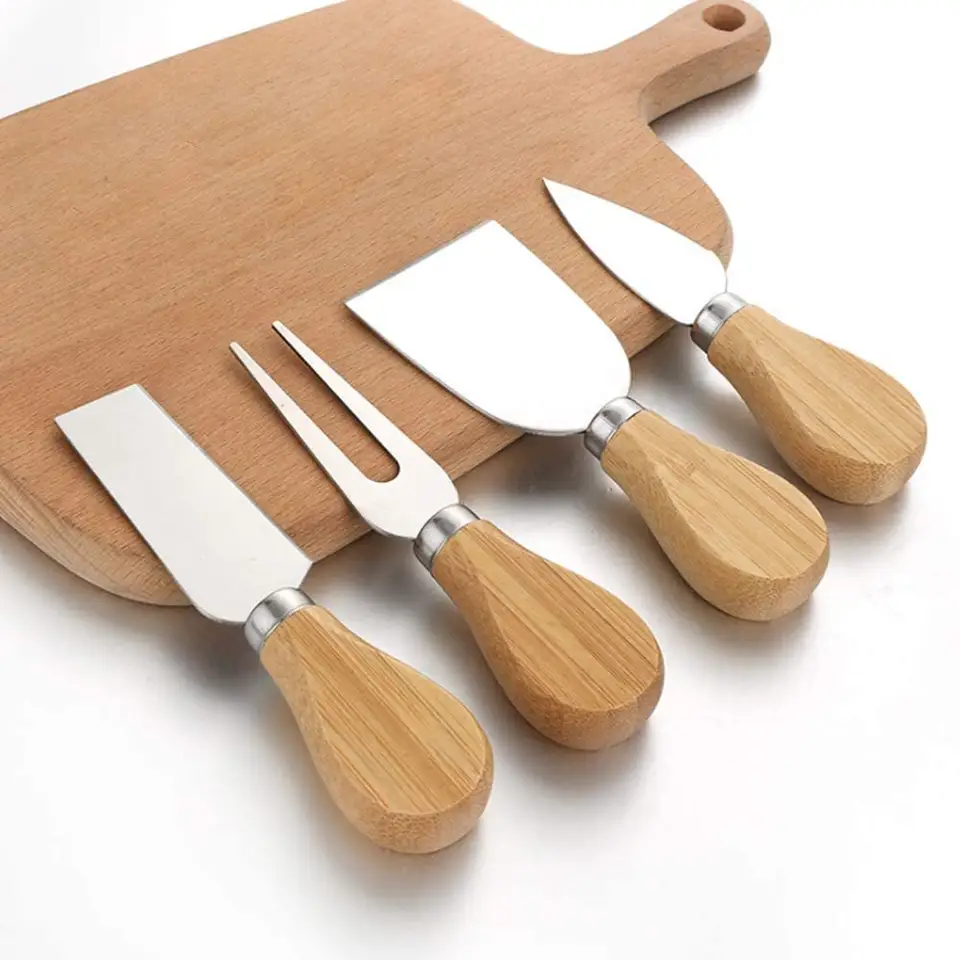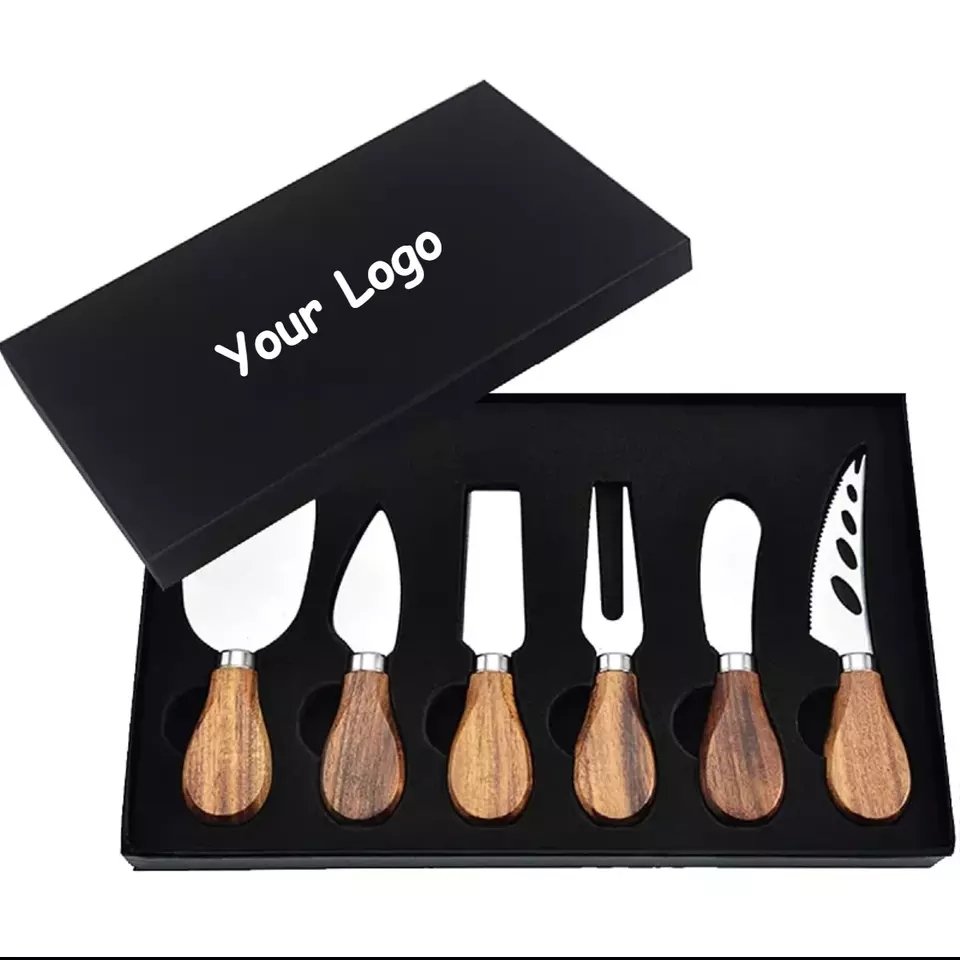Ever bought cutlery that quickly tarnished or bent, leaving you frustrated? Cheap stainless steel often comes with hidden problems affecting durability, safety, and long-term cost.
Good stainless steel cutlery typically uses grades 18/10, 18/8, or 304 stainless steel, offering better corrosion resistance, durability, and safety compared to lower grades like 18/0.
As someone who’s spent over a decade in the cutlery business, I’ve seen firsthand how low-quality stainless steel can disappoint customers. Let’s explore together how to make smarter buying choices.
Table of Contents
What should I look for when buying stainless steel cutlery?
Have you ever picked a cutlery set that quickly rusted or lost its shine? Knowing exactly what to check can save you frustration later on.
When buying stainless steel cutlery, look for grade markings (18/10, 18/8), weight, finish quality, smooth edges, comfortable handles, and certifications like FDA, LFGB, or DGCCRF.
When selecting stainless steel cutlery, there are several critical factors you should consider:
Grade Markings
Check for common quality marks:
🧾 Understanding Stainless Steel Grade Markings
| Grade Marking | Chromium % | Nickel % | Durability & Rust Resistance |
|---|---|---|---|
| 18/10 | 18% | 10% | ⭐⭐⭐⭐⭐ Excellent |
| 18/8 | 18% | 8% | ⭐⭐⭐⭐ Good |
| 18/0 | 18% | 0% | ⭐⭐ Basic |
Higher nickel content (like 18/10) typically provides better corrosion resistance and shine.
Weight and Thickness
Good-quality cutlery feels solid but balanced. Too light means it could bend; too heavy might be uncomfortable.
⚖️ Recommended Weight Range for Cutlery Comfort
| Cutlery Type | Ideal Weight per Piece (grams) |
|---|---|
| Knife | 60–120 g |
| Fork | 40–70 g |
| Spoon | 40–70 g |
Finish and Edges
The best cutlery should have a smooth, polished finish without scratches or rough edges. Poor finishing often indicates inferior quality control.
Certifications and Standards
Good suppliers always provide clear documentation such as FDA, LFGB, or DGCCRF certifications. These ensure safety standards are met, particularly regarding food contact.
In my years of dealing with cutlery buyers, I’ve noticed that focusing on these four factors significantly improves long-term satisfaction with your purchase.
What is a good grade of stainless steel for cutlery?
Are you puzzled by various stainless steel grades and unsure what’s best? Choosing the right grade makes all the difference.
The best grades for cutlery are 18/10, 18/8, or 304 stainless steel. They have higher nickel content, providing excellent corrosion resistance, durability, and a lasting shine.
Stainless Steel Grades Explained
Here’s a simple breakdown of popular stainless steel grades:
🥄 Stainless Steel Grades: Composition & Use Case Overview
| Stainless Steel Grade | Chromium (%) | Nickel (%) | Use Case & Performance |
|---|---|---|---|
| 18/10 | 18% | 10% | Premium cutlery with high corrosion resistance |
| 18/8 (304) | 18% | 8% | Widely used, great durability for daily use |
| 18/0 | 18% | 0% | Budget cutlery with basic rust resistance |

Why Nickel Matters
Nickel improves corrosion resistance and maintains brightness, making your cutlery last longer. Without nickel, cutlery tends to rust quickly, especially in humid environments or dishwasher use.
In my experience, many clients regret choosing 18/0 just to save money upfront. Over time, replacing corroded cutlery becomes costly, outweighing initial savings.
Practical Choice: 304 Stainless Steel
304 stainless steel (18/8) is the sweet spot for most buyers, offering great durability without a hefty price tag. It’s perfect for everyday use and commercial settings.
What are the disadvantages of stainless steel cutlery?
Wondering if stainless steel has drawbacks you should know about? Even good-quality stainless steel isn’t perfect.
Disadvantages of stainless steel cutlery include potential scratching, heat conduction (can become hot), limited color options, and quality inconsistency with cheaper grades.
Despite being popular, stainless steel cutlery has a few disadvantages:
Susceptibility to Scratches
Even premium stainless steel can scratch. Using abrasive cleaning tools or stacking improperly can cause visible damage.
Heat Conductivity
Stainless steel conducts heat quickly, so spoons or knives left in hot food can become uncomfortably warm. This is something ceramic or plastic utensils don’t suffer from.
Limited Aesthetic Choices
Stainless steel generally comes in silver-toned finishes. If you prefer colorful utensils, options are limited or less durable.
Quality Variation
Quality varies widely, especially with budget stainless steel. Cheap cutlery often rusts or bends, requiring frequent replacements.
I’ve personally experienced these issues, especially during rigorous use. Selecting high-grade stainless steel significantly reduces these problems.
What to do with old stainless steel cutlery?
Have old stainless steel utensils cluttering your kitchen drawers? Don’t just toss them out!
Old stainless steel cutlery can be recycled, donated to charities, creatively repurposed (garden tools or decorations), or sold as scrap metal.
Recycling and Selling Scrap Metal
Stainless steel is highly recyclable. Many recycling centers accept cutlery, and you might earn some cash by selling it as scrap.
Donation and Charity
Charitable organizations, schools, or shelters often need utensils. Your unwanted cutlery could greatly help others.
Repurposing Ideas
Old cutlery can be creatively reused:
🌱 Creative Ways to Repurpose Old Cutlery
| Repurpose Idea | How to Do It |
|---|---|
| Garden Markers | Engrave or paint herb/vegetable names on forks or spoons |
| Hooks & Handles | Bend sturdy forks or spoons to mount as wall hooks or drawer pulls |
| Decorative Artwork | Turn old pieces into wind chimes, sculptures, or mixed-metal art |
Repurposing old cutlery can be fun and rewarding—I’ve turned old spoons into garden markers myself!
How can you tell if stainless steel is high quality?
Confused about distinguishing high-quality stainless steel from cheap alternatives?
High-quality stainless steel feels solid, has a clear grade mark (18/10 or 304), resists rust, maintains shine after washing, and carries reputable certifications.
Identifying High-Quality Stainless Steel Cutlery
To judge stainless steel quality, look closely at these features:
✅ How to Identify High-Quality Stainless Steel Cutlery
| Checklist Item | What to Look For |
|---|---|
| Grade Markings | Clearly labeled as 18/10, 18/8, or 304 on the utensils |
| Rust Resistance | No signs of rust after multiple dishwasher cycles or soak tests |
| Weight & Balance | Feels solid, evenly balanced, and comfortable in hand |
| Polished Finish | Smooth, uniform, mirror or satin polish, free from scratches |
| Certification Proof | Valid certificates like FDA, LFGB, or DGCCRF |
What is the best number for stainless steel silverware?
Ever bought cutlery marked “stainless” only to find rust spots or dullness shortly after? Knowing the right numbers can save you these headaches.
The best stainless steel silverware number is 18/10, containing 18% chromium and 10% nickel. This combination offers superior corrosion resistance, shine, and durability compared to lower numbers like 18/0.
Understanding Stainless Steel Numbers: Why 18/10 is Best?
Stainless steel silverware numbers, like 18/10 or 18/0, show chromium and nickel percentages. Chromium makes steel corrosion-resistant, while nickel adds shine and durability. A lack of nickel (like 18/0) reduces quality significantly.
Comparing 18/10 vs 18/0 Stainless Steel
🔍 18/10 vs. 18/0 Stainless Steel: Key Attribute Comparison
| Attribute | 18/10 Stainless Steel | 18/0 Stainless Steel |
|---|---|---|
| Corrosion Resistance | ⭐⭐⭐⭐⭐ Excellent – Resists rust effectively | ⭐⭐ Lower – May rust with frequent use |
| Appearance | Bright, mirror-like finish | Duller, less reflective finish |
| Durability | High – Less prone to dents or bending | Moderate – More wear over time |
| Price | 💲💲💲 More expensive | 💲 Budget-friendly |
From my years in cutlery production, I’ve seen countless customers disappointed by 18/0 sets. They initially save money but quickly regret their choice as their cutlery loses shine or starts rusting after minimal use.
Choosing 18/10 stainless steel is wiser in the long run. It might cost a little more initially, but you’ll avoid frequent replacements and frustration. The extra cost pays off with lasting beauty and reliability.
What is good quality stainless steel cutlery?
Buying inexpensive cutlery might seem smart, but low-quality utensils break, bend, or rust easily, wasting your money and spoiling your dining experience.
Good quality stainless steel cutlery features high chromium (at least 18%) and nickel (preferably 10%) content. It’s sturdy, resists corrosion, has smooth edges, balanced weight, and a polished finish that stays bright through frequent use.
When evaluating cutlery quality, consider these key points:
Factors Defining Good Quality Cutlery:
🧾 Key Factors That Define High-Quality Stainless Steel Cutlery
| Factor | Description and Importance |
|---|---|
| Chromium Content | Minimum 18% – provides corrosion and rust resistance |
| Nickel Content | Ideal at 8–10% – adds durability, enhances shine |
| Weight | Solid and balanced – reflects metal thickness and premium feel |
| Finish | Polished surface, smooth edges – no sharp seams or imperfections |
| Manufacturer | Choose trusted brands with certified quality standards |
Many cheap sets cut corners on manufacturing. They use lower-quality steel, thinner materials, and skip polishing steps. I’ve visited many factories in China—good manufacturers always ensure strict quality control. Poorly made cutlery has visible seams, feels lightweight, and quickly loses its shine.
Choosing high-quality cutlery saves you money over time because it remains usable and attractive for many years. Avoid cheap imitations; always inspect product specifications closely before purchasing.
Which is better, 18-10 or 18 0 stainless steel flatware?
Choosing between 18/10 and 18/0 flatware seems confusing. Is nickel really worth paying extra for?
18/10 stainless steel is better than 18/0. It offers excellent corrosion resistance, superior shine, and greater strength due to its nickel content. 18/0 lacks nickel, making it prone to rust and less durable over time.
Pros and Cons Comparison:
🔍 18/10 vs. 18/0 Stainless Steel: Full Comparison at a Glance
| Criteria | 18/10 Stainless Steel | 18/0 Stainless Steel |
|---|---|---|
| Rust Resistance | ⭐⭐⭐⭐⭐ High – excellent protection | ⭐⭐ Moderate to Low – may rust over time |
| Longevity | 🛠️ Long-lasting – ideal for daily, long-term use | 🧾 Short lifespan – prone to wear or bending |
| Shine & Finish | ✨ Exceptional mirror shine, easy to maintain | 🪞 Dulls quickly, requires more upkeep |
| Cost | 💲💲💲 Higher upfront investment | 💲 Lower initially, but higher replacement cost |
| Allergic Reactions | ✔️ Contains nickel – very rare to cause issues | ✅ Nickel-free – safe for sensitive users |
You might consider 18/0 stainless steel if you have a nickel allergy. Otherwise, investing slightly more for 18/10 is smarter. Cheap flatware might initially attract you with lower prices, but you’ll soon face rust, fading shine, and replacement costs. Quality flatware is more economical long-term, and it also enhances your dining experience significantly.
I’ve personally seen how buyers regret choosing cheaper options. Quality always pays off.
What grade stainless steel utensils are best?
Choosing utensils without knowing steel grades leads to rust spots, weak forks, and dull spoons.
Grade 304 stainless steel is the best for utensils. It combines excellent corrosion resistance, strength, affordability, and ease of maintenance. Grade 316 is slightly superior but often unnecessary for home use.
Comparison of 304 and 316 Grades for Utensils:
🔬 Stainless Steel Comparison: Grade 304 vs. Grade 316
| Feature | Grade 304 | Grade 316 |
|---|---|---|
| Corrosion Resistance | ⭐⭐⭐⭐ High – ideal for kitchen & food use | ⭐⭐⭐⭐⭐ Very High – great for salt, acid, moisture |
| Cost | 💲 Affordable | 💲💲 More expensive |
| Common Use | Home utensils, restaurant cutlery | Medical tools, marine & chemical applications |
| Strength | Excellent balance of strength & formability | Higher tensile strength, better for heavy-duty use |
In daily dining, Grade 304 offers the perfect balance. Grade 316 includes molybdenum, making it resistant to harsh conditions like saltwater exposure. But it’s overkill for typical dining utensils. I’ve seen companies market Grade 316 as superior, convincing consumers to pay extra unnecessarily. For most buyers, Grade 304 is ideal—strong, safe, and cost-effective.
How do I choose the best stainless steel?
Ever wondered why some cutlery stays shiny and durable while others quickly deteriorate? Choosing the wrong stainless steel grade can cause rusting, bending, and health issues.
Select stainless steel cutlery by checking grades (18/10, 304, 316), corrosion resistance, weight balance, and a smooth finish. Avoid overly cheap options, as these often compromise on quality and longevity.
choosing the best stainless steel
Selecting the best stainless steel involves understanding several key aspects. First, stainless steel grades matter a lot. Popular grades like 18/10, 304, and 316 differ significantly in composition and durability. The “18/10” signifies 18% chromium and 10% nickel, ideal for preventing rust and enhancing shine. Grade 304 stainless steel is widely recognized for its durability, containing similar chromium-nickel composition. Grade 316, on the other hand, includes additional molybdenum, which boosts its resistance to corrosion and makes it suitable for salty environments.
🔍 Stainless Steel Grades: Composition, Usage & Durability
| Grade | Chromium % | Nickel % | Molybdenum % | Usage | Durability |
|---|---|---|---|---|---|
| 18/10 | 18 | 10 | 0 | Home & restaurant cutlery | ⭐⭐⭐⭐ High |
| 304 | 18–20 | 8–10 | 0 | General kitchen & everyday use | ⭐⭐⭐⭐ Very High |
| 316 | 16–18 | 10–14 | 2–3 | Marine, chemical, surgical environments | ⭐⭐⭐⭐⭐ Extremely High |
Second, consider corrosion resistance. Higher chromium and nickel content typically means better resistance. While cheaper options exist, they usually have less nickel, making them prone to rusting.
Third, finishing and polishing impact durability. Smoothly polished stainless steel reduces the surface for bacteria and rust, contributing significantly to long-term safety and aesthetics.
Lastly, check certifications like FDA or LFGB, which confirm compliance with health standards, critical if the cutlery contacts food regularly.
Always choose wisely by considering the intended use, environment, and required maintenance. Spending slightly more initially often reduces long-term replacement costs and enhances safety.
What is a good weight for stainless steel cutlery?
Have you held lightweight cutlery that feels cheap and easily bent? Choosing cutlery with inadequate weight might lead to poor handling and low durability.
A good weight for stainless steel cutlery ranges between 100g to 150g per piece. Heavier cutlery feels substantial, balanced, and durable, while too light often signals lower quality and weaker materials.
When selecting stainless steel cutlery, weight plays a key role in assessing quality. Too light, and the cutlery might feel cheap and flimsy; too heavy, and it may be cumbersome for daily use. Typically, a good balance is essential for comfort and durability.
⚖️ Cutlery Weight Guide: Impact on Feel, Durability & Comfort
| Weight Range | Feel & Usage | Durability | Comfort Level |
|---|---|---|---|
| < 100g | Lightweight, may feel flimsy or cheap | ⭐ Low | ⭐ Low |
| 100–150g | Balanced, comfortable, ideal for daily use | ⭐⭐⭐⭐ High | ⭐⭐⭐⭐ High |
| > 150g | Luxurious, solid grip, may tire hands | ⭐⭐⭐⭐⭐ Very High | ⭐⭐ Medium |
Moderate weight (around 100-150g per piece) generally indicates better materials and sturdier construction. This weight feels comfortable in hand and provides optimal balance. High-end brands typically adhere to this standard, blending both comfort and reliability.
Heavier cutlery over 150g per piece is suitable mainly for formal dining or special occasions. It provides an upscale, luxurious experience but might be less practical for everyday use.
Consider personal preferences alongside practicality. For regular usage, a balanced weight ensures ease of handling and longevity, enhancing overall satisfaction and durability.
What is the most popular grade of stainless steel?
Confused about all the stainless steel grades? Picking the wrong popular grade could mean compromising durability, maintenance, and safety.
304 stainless steel is the most popular grade used in cutlery, renowned for excellent corrosion resistance, durability, affordability, and suitability for everyday use.
304 stainless steel leads the industry due to its balance of durability, resistance to corrosion, affordability, and versatility. It’s commonly found in homes and restaurants because it withstands daily usage well. Grade 304 includes chromium and nickel in optimal ratios, enhancing its protective oxide layer, thus preventing rust.
🧾 Stainless Steel Grades Overview: Usage, Cost & Care
| Grade | Common Uses | Cost | Corrosion Resistance | Ease of Maintenance |
|---|---|---|---|---|
| 304 | Household, restaurants | 💲💲 Moderate | ⭐⭐⭐⭐ High | ✅ Easy |
| 316 | Marine, medical environments | 💲💲💲 High | ⭐⭐⭐⭐⭐ Extremely High | ⚠️ Moderate (due to higher polish care) |
| 430 | Basic, budget-friendly items | 💲 Low | ⭐⭐ Moderate | ❌ Difficult (can stain/rust easier) |
Although 316 grade stainless steel has superior corrosion resistance (especially in marine or medical settings), it’s usually more expensive. Thus, 304 remains most popular for general and frequent use.
430 grade stainless steel, cheaper and magnetic, contains no nickel, offering basic functionality but inferior corrosion resistance. It typically suits budget-friendly applications where longevity is less critical.
Understanding these differences helps you choose appropriately according to your needs, environment, and budget constraints.
How do I choose stainless steel cutlery?
Have you struggled choosing stainless steel cutlery because you didn’t know what to look for? Many people buy based on looks alone and end up disappointed.
Choose stainless steel cutlery by examining material grades (18/10, 304, 316), checking weight for comfort, testing corrosion resistance, and ensuring the finish is smooth and well-polished. Always avoid overly cheap options.
When picking stainless steel cutlery, there are several important factors. First, always pay close attention to the stainless steel grade. High-quality cutlery typically has labels such as 18/10, 304, or 316. These numbers indicate chromium and nickel content, essential elements that ensure durability and rust resistance.
Next, look closely at the weight. Good cutlery feels balanced—not too heavy or too light. Lightweight cutlery usually means thin, poor-quality metal. Conversely, overly heavy cutlery might feel awkward. Ideally, each piece should weigh between 100-150 grams.
The next factor is corrosion resistance. Good-quality stainless steel resists rusting because it has enough chromium and nickel. You can test corrosion resistance by looking for certifications from trusted authorities like FDA or LFGB, ensuring the cutlery meets food safety standards.
Another aspect is the finish. Polished stainless steel is smoother, preventing bacteria from collecting and making cleaning easier. Rougher finishes might save money, but cleaning them becomes difficult, and hygiene suffers.
Here’s a structured view of these considerations:
🥇 Complete Guide to Choosing High-Quality Stainless Steel Cutlery
| Factors | Importance | What to Look For | Recommended Choice |
|---|---|---|---|
| Grade | ⭐⭐⭐⭐⭐ High | 18/10, 304, or 316 stainless steel | ✅ 304 or 316 |
| Weight | ⭐⭐⭐ Medium | Comfortable balance in hand (ideal: 100–150g) | ✅ Around 120g |
| Corrosion Resistance | ⭐⭐⭐⭐⭐ Very High | High chromium + nickel content for rust resistance | ✅ Grade 316 |
| Finish | ⭐⭐⭐⭐ Medium–High | Smooth, polished, no rough edges | ✅ Mirror finish |
| Certifications | ⭐⭐⭐⭐⭐ High | Verified FDA, LFGB, or DGCCRF safety standards | ✅ FDA-certified products |
Each factor helps ensure you invest in cutlery that serves you safely and effectively over the long run.
What are the 3 grades of stainless steel?
Confused by different stainless steel grades? Picking blindly could mean buying cutlery that rusts easily or isn’t safe for long-term use.
The three main grades of stainless steel used in cutlery are 304 (18/8), 316 (marine-grade), and 430 (budget grade). Each has distinct properties affecting durability, corrosion resistance, and price.
Each stainless steel grade has distinct strengths and weaknesses. Knowing these helps make smarter buying choices.
Grade 304 (18/8)
Grade 304 is the most common stainless steel used in kitchenware. It contains 18% chromium and 8% nickel, giving good corrosion resistance. It’s durable, affordable, and suitable for regular use.
Grade 316 (Marine-grade)
Grade 316 stainless steel adds about 2% molybdenum to chromium and nickel. This boosts corrosion resistance dramatically, especially against salt and chemicals. It is ideal for coastal areas, hospitals, or any tough environments. However, it’s pricier.
Grade 430 (Budget grade)
Grade 430 is cheaper, containing chromium but no nickel. It’s magnetic, easily rusted, and not very durable. It’s commonly used in very low-cost kitchen utensils, but unsuitable for long-term or heavy use.
Here’s a clear comparison:
🧪 Stainless Steel Grades: Composition, Pros & Ideal Use Cases
| Grade | Composition | Strengths | Weaknesses | Ideal for |
|---|---|---|---|---|
| 304 | 18% Chromium, 8% Nickel | Durable, affordable, food-safe | Moderate corrosion resistance in salt/moist areas | Daily household use, restaurants |
| 316 | 16–18% Chromium, 10–14% Nickel, 2–3% Molybdenum | Superior corrosion resistance (salt/acid) | Higher cost | Coastal areas, medical/surgical tools |
| 430 | 16–18% Chromium, No Nickel | Budget-friendly, magnetic | Prone to rust, lower durability | Temporary use, budget cutlery, decorations |
Knowing these grades makes it simpler to choose based on your actual needs. If long-lasting quality is important, focus on grades 304 or 316.

How to tell the difference between 304 and 316 stainless steel?
Ever wondered how to spot the difference between 304 and 316 stainless steel? Not knowing could mean accidentally paying premium prices for lower-quality metal.
To differentiate 304 from 316 stainless steel, look at labels, manufacturer details, or perform a simple chemical test. Grade 316 often costs more and has superior corrosion resistance due to added molybdenum.
Both 304 and 316 stainless steels are common but differ significantly. Understanding their differences is key when you want specific performance or budget control.
Visual and Practical Differences
Generally, 304 and 316 look similar. Both have a shiny, silver finish. The easiest visual distinction is labels or packaging details provided by manufacturers. Genuine manufacturers clearly mark their products.
Corrosion Resistance
Grade 316 resists rusting better due to molybdenum. If you’re using cutlery in salty or acidic environments, choose 316 stainless steel. For typical kitchen use, 304 provides sufficient protection.
Cost Differences
Grade 316 stainless steel typically costs 20-30% more than 304. Unless you need extreme corrosion resistance, 304 remains more cost-effective and practical for most purposes.
🔍 304 vs. 316 Stainless Steel: Practical Comparison
| Factor | 304 Stainless Steel | 316 Stainless Steel |
|---|---|---|
| Corrosion Resistance | ⭐⭐⭐⭐ Good for general use (kitchen, dining) | ⭐⭐⭐⭐⭐ Excellent – marine-grade, chemical-safe |
| Cost | 💲 Moderate, budget-friendly | 💲💲 Higher – ~20–30% more expensive |
| Identification | Often labeled as “304” or “18/8” | Clearly marked “316” in specs or product info |
| Practical Usage | Standard kitchenware, indoor environments | Coastal regions, hospitals, surgical tools |
By clearly knowing these differences, you ensure you get what you pay for without unnecessary overspending.
Choosing good stainless steel cutlery means understanding grades, weight, and corrosion resistance, avoiding cheap products that could cost more long-term due to poor quality.





